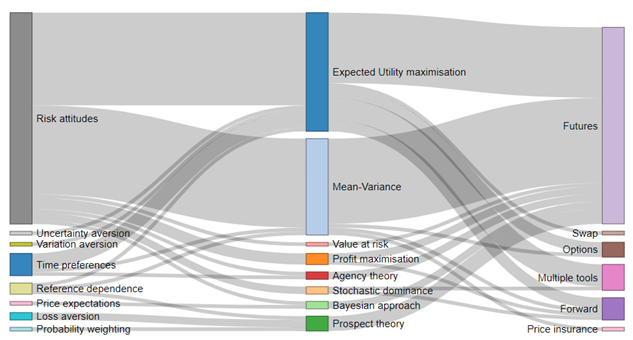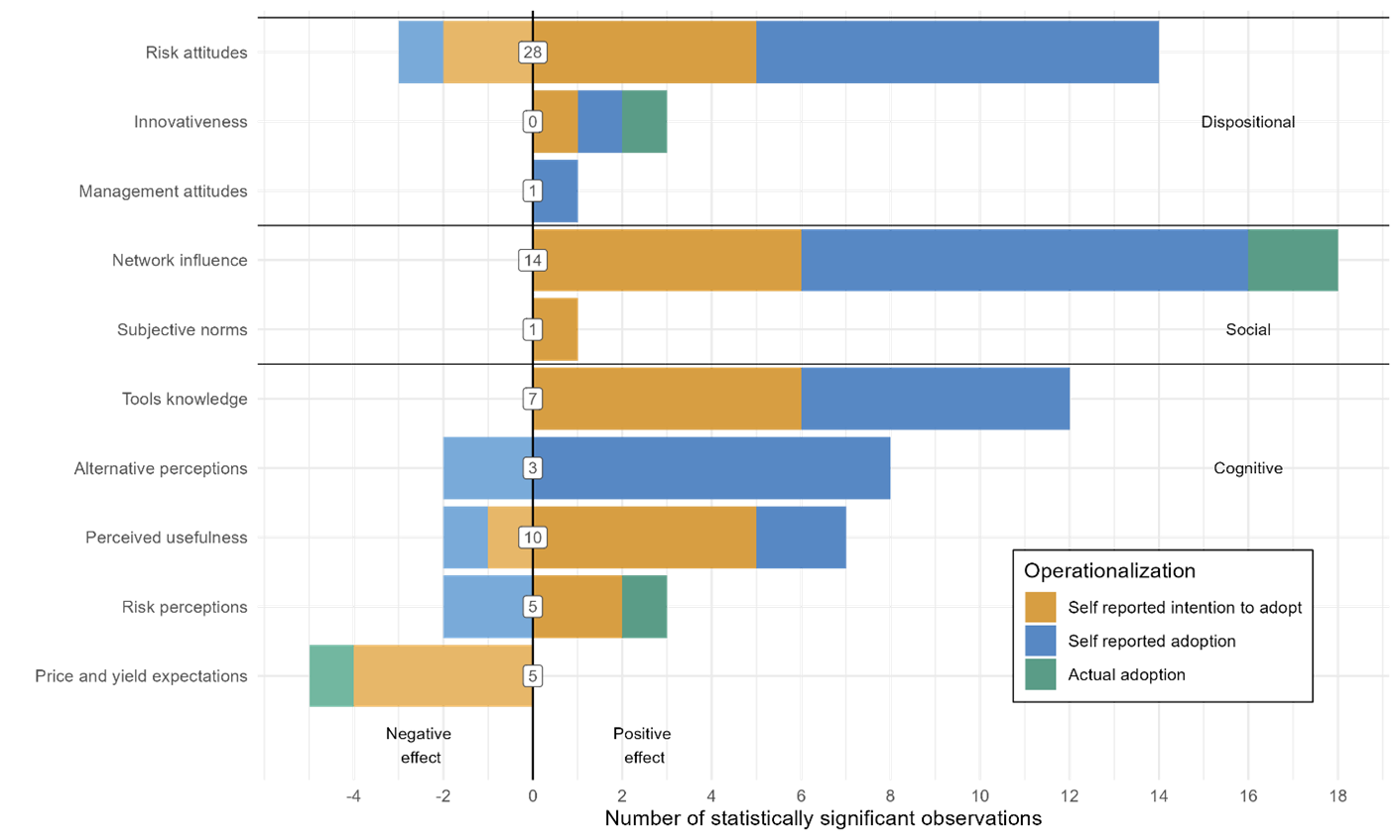What Drives Farmers’ Use of Financial Tools? A Review of Behavioural Influences (Deliverable D5.2)
Price volatility is one of the most significant risks in agricultural production.
Farmers must navigate unpredictable fluctuations in input and output prices, which can threaten their profitability and
long-term stability. Financial tools—such as forward contracts, futures, options, and price insurance—offer
mechanisms to mitigate these risks. However, despite their potential benefits, adoption rates among farmers remain
surprisingly low.
Understanding why farmers hesitate to use these tools requires looking beyond traditional economic models. Behavioural factors play a crucial role in decision-making, particularly in contexts involving risk and uncertainty, such as price risk management. Insights from behavioural economics can therefore help explain why some farmers embrace financial risk management strategies while others remain reluctant.
In Deliverable D5.2 – Farmers' Adoption of Price Risk Management Tools, we conduct a systematic literature review to explore the behavioural drivers behind farmers' decisions to adopt financial tools for price risk mitigation. Our analysis focuses on countries with highly intensive farming systems, classifying behavioural factors into two main categories: behavioural preferences (e.g. risk aversion, ambiguity preferences, time preferences, loss aversion, and probability weighting), which can be integrated into economic models, and psychological factors (e.g. social interactions, cultural influences, and personality traits), which shape decision-making but are often not formally incorporated into economic frameworks.
Behavioural Preferences in Economic Models
As shown in the figure, the majority of papers on behavioural preferences use an Expected Utility or Mean-Variance representation of farmers’ risk preferences to find the optimal hedging decision for futures. Surprisingly, only one paper focuses on Cumulative Prospect Theory’s loss aversion and probability weighting in relation to futures adoption in a simulation.

Psychological Factors in Experiments
Multiple empirical papers correlate farmers’ psychological preferences with the adoption of price risk management tools. However, findings regarding risk attitudes have been mixed, with many studies eliciting risk attitudes but finding no correlation with adoption decisions. Network influence, or so-called peer effects, is a particularly promising avenue to be formally incorporated into economic models for price risk management. Additionally, knowledge of risk management tools was also found to be an important factor in adoption decisions. This suggests that extension services, financial tool providers, and policymakers can play a role in providing training and education to improve farmers’ decision-making ability regarding price risk.

Note: Numbers inside the boxes indicate the number of statistically insignificant observations.
Results show a substantial literature gap in empirical work that correlates elicited behavioural preferences with actual adoption of price risk management instruments (see figure). We thus conclude that there is currently a very limited understanding of farmers’ price risk management adoption and related decision-making processes. Additional experimental research on the relationship between behavioural preferences and price risk management decisions would enable a more targeted design of instruments and policies to make these tools more attractive to farmers.
